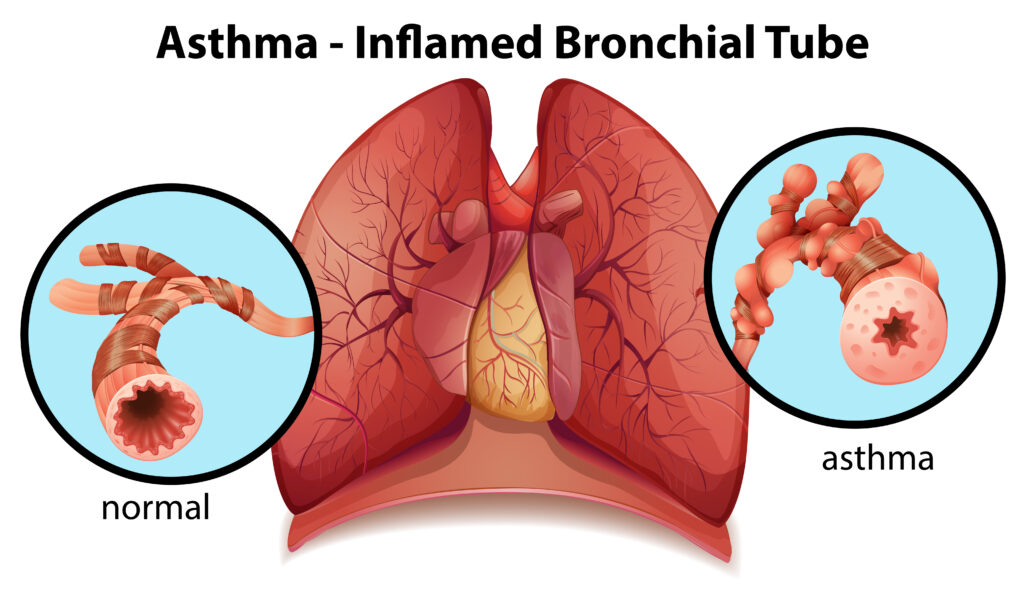
Hyperinflated lungs, an interesting and frequently misconstrued condition, can altogether affect one’s respiratory wellbeing. In this far reaching guide, we will set out on an excursion to open the mysteries of hyperinflated lungs, grasping their causes, side effects, determination, and accessible medicines. Thus, how about we jump into the universe of respiratory wellbeing and disclose the secrets encompassing this condition.
Table of Contents
Introduction
In the domain of respiratory wellbeing, different circumstances can influence the appropriate working of our lungs. One such condition is hyperinflated lungs, which can be a reason for worry for some people. This article means to reveal insight into the secret of hyperinflated lungs, its causes, side effects, analysis, treatment choices, and preventive measures. Toward the finish of this read, you will acquire a thorough comprehension of this condition and how to successfully oversee it.
Understanding Hyperinflated Lungs
Hyperinflated lungs allude to a condition where the air sacs in the lungs, known as alveoli, become overinflated. This peculiarity happens when there is an unusual expansion in lung volume past the standard reach. Different variables add to this event, like persistent obstructive aspiratory infection (COPD), asthma, or other respiratory issues.
Symptoms and Diagnosing of Hyperinflation of Lungs
Common Signs: Hyperinflated lungs can appear with a few side effects, including windedness, wheezing, constant hack, and chest snugness. People may likewise encounter decreased practice resilience and exhaustion.
Diagnostic Procedures: To analyze hyperinflation of lungs, medical services experts might utilize different tests, for example, pneumonic capability tests, chest X-beams, CT filters, and blood vessel blood gas investigation. These methodology help to evaluate lung capability and recognize the fundamental reason for out of control inflation.
Hyperinflation of Lungs and Respiratory Conditions
COPD:

Chronic obstructive pulmonary disease is one of the leading causes of hyperinflated lungs. It encompasses conditions like emphysema and chronic bronchitis, which gradually damage the lung tissues, leading to hyperinflation.
Asthma:

Asthma, a chronic inflammatory respiratory condition, can also contribute to hyperinflated lungs. During asthma attacks, the airways become narrowed, making it difficult for air to move freely in and out of the lungs, causing hyperinflation.
Treatment Options
Medications: Depending on the underlying cause, healthcare providers may prescribe bronchodilators, corticosteroids, or other medications to manage symptoms and reduce inflammation in the airways.
Breathing Exercises: Pulmonary rehabilitation, which includes breathing exercises, can help improve lung function and reduce hyperinflation. Techniques like pursed-lip breathing and diaphragmatic breathing are commonly recommended.
Surgical Interventions: In severe cases, surgical options like lung volume reduction surgery may be considered to remove damaged lung tissue and improve lung function.
Lifestyle Tips
- Quit Smoking: If you smoke, quitting is essential as it can significantly worsen hyperinflation and exacerbate respiratory symptoms.
- Regular Exercise: Engaging in regular physical activity can strengthen the respiratory muscles and enhance lung capacity.
- Healthy Diet: A balanced diet rich in fruits, vegetables, and whole grains can contribute to overall lung health.
- Avoiding Triggers: If you have asthma or other respiratory conditions, avoiding triggers like allergens and pollutants can reduce the risk of exacerbating hyperinflated lungs.
Preventive Measures
While hyperinflation of lungs often result from underlying respiratory conditions, some preventive measures can reduce the risk of developing complications:
- Vaccinations: Annual flu shots and pneumonia vaccinations are recommended to prevent respiratory infections that can worsen hyperinflation.
- Regular Check-ups: Periodic check-ups with healthcare professionals can help monitor lung function and identify any potential issues early on.
Living with Hyperinflation of Lungs: Personal Stories
Hearing personal stories from individuals living with hyperinflation of lungs can offer valuable insights and support to others facing similar challenges. Their experiences, coping mechanisms, and success stories can inspire those managing this condition.
The Importance of Early Detection and Management
Early detection and proper management of hyperinflated lungs are vital in maintaining optimal respiratory health. Seeking medical attention at the first sign of respiratory symptoms can help prevent further complications and improve overall quality of life.
Conclusion
All in all, hyperinflation of lungs can be a perplexing condition, yet with the right comprehension and the executives, people can lead satisfying lives. By perceiving the signs, looking for early conclusion, and taking on preventive measures, the effect of out of control inflation can be limited. Keep in mind, it is fundamental for work intimately with medical services experts to tailor a customized therapy plan for the most ideal results.
FAQs
- Can hyperinflation of lungs be cured? While hyperinflated lungs cannot be completely cured, proper management can significantly improve symptoms and quality of life.
- Is hyperinflated lungs a life-threatening condition? Hyperinflated lungs, if left unmanaged, can lead to severe complications. However, with early detection and appropriate care, the prognosis can be positive.
- Are there any natural remedies for managing hyperinflated lungs? While natural remedies may complement medical treatment, it’s essential to consult with a healthcare professional before trying any alternative therapies.
- Can children develop hyperinflated lungs? Yes, hyperinflated lungs can occur in children, especially if they have underlying respiratory conditions like asthma.
- Is hyperinflated lungs only associated with smoking? No, hyperinflated lungs can result from various respiratory conditions, and smoking is just one of the contributing factors.

Pingback: Breathless No More: Navigating Interstitial Lung Disease ICD 10 with Ease - CREATIVE WEB-MANIA
Your article helped me a lot, is there any more related content? Thanks!
Can you be more specific about the content of your article? After reading it, I still have some doubts. Hope you can help me.
Thanks for sharing. I read many of your blog posts, cool, your blog is very good.